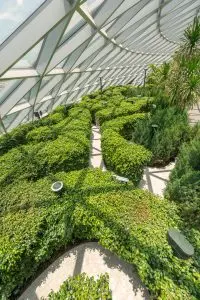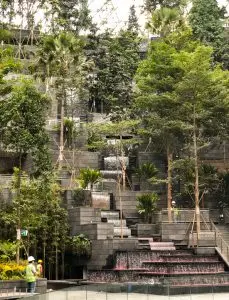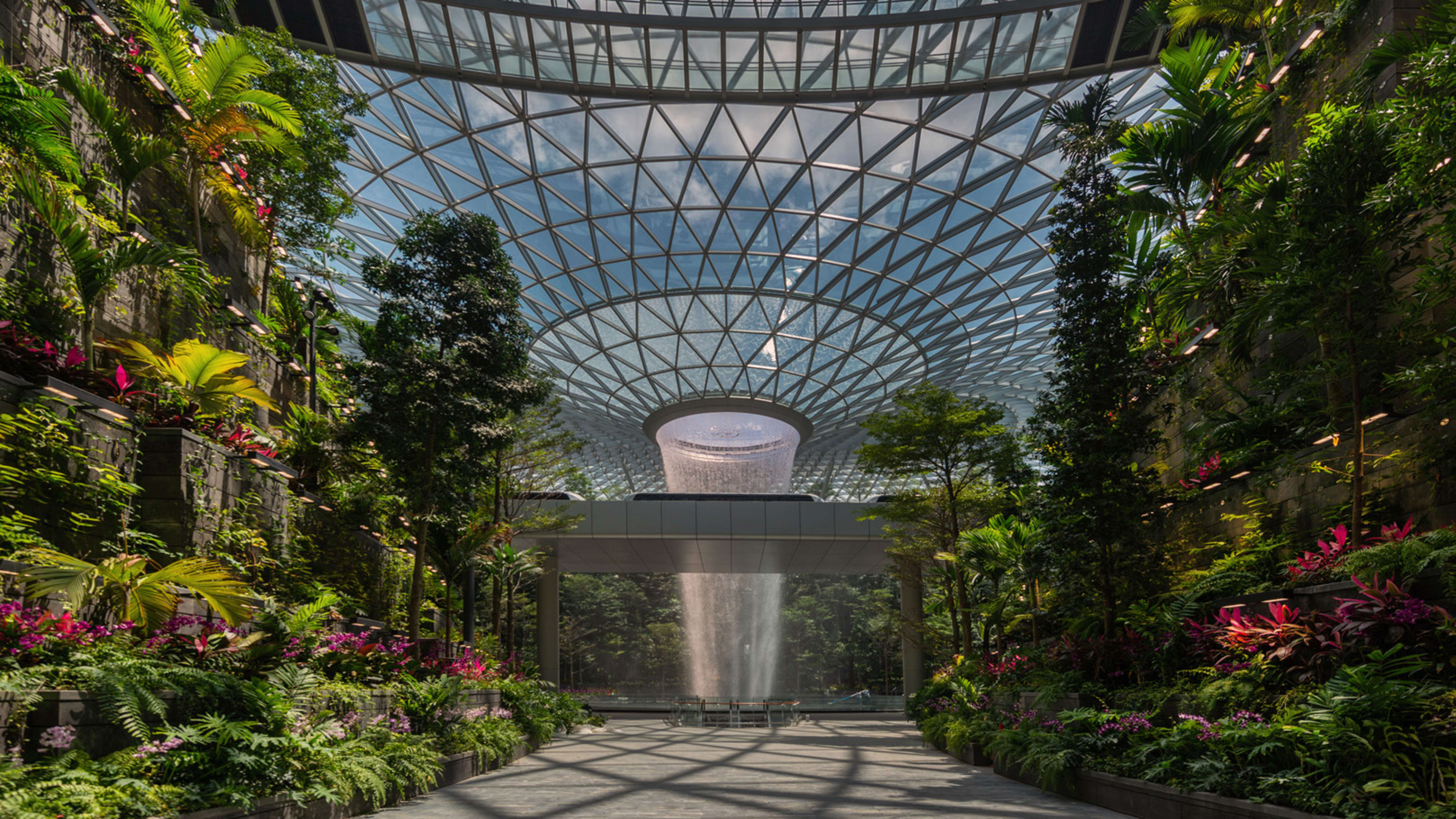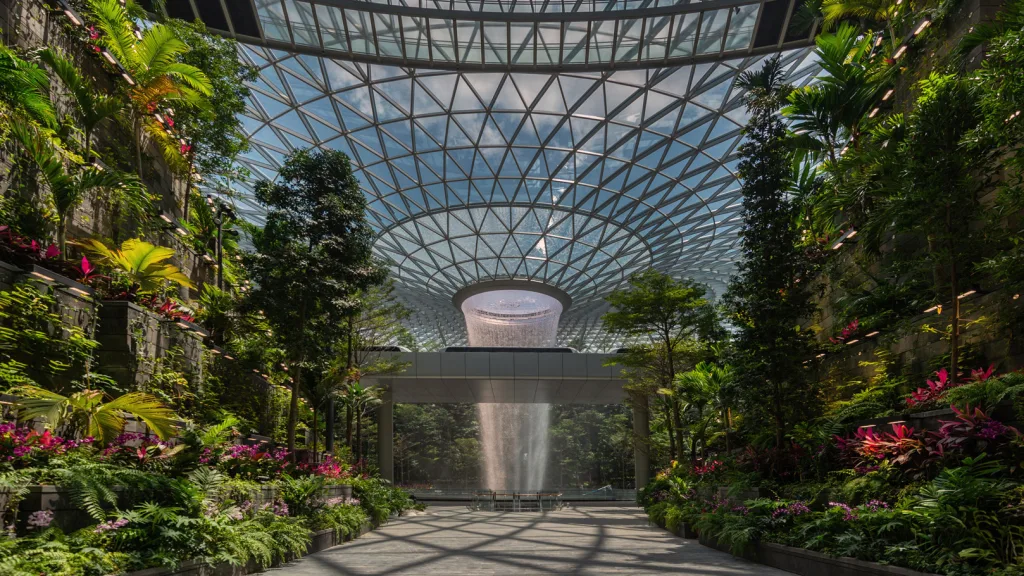Singapore’s Jewel Changi Airport is regularly voted as the best airport in the world, a title it just secured for the seventh consecutive year in spite of–or perhaps because of–its frenetic pace of expansion over the past decade. Changi’s third terminal opened in 2008. It opened a fourth in 2017, hailed as the first “biometric terminal” for its use of facial recognition software during check-in. The airport is planning to open a fifth terminal by 2030 (the country will complete a new port for ships by 2021, too).

Jewel sits on an old parking lot at the airport, where the revered Canadian-Israeli architect’s firm concocted a chunky toroid made up of tessellated glass that turns inward at its apex, like a giant belly button, to create the world’s largest indoor waterfall. The building features an almost comically long list of entertainment features: There are walking paths and a sprawling adventure park under the glass awning, featuring bounce nets, mazes, and a “cloud bowl” full of swirling artificial mist. There is a 130-room YOTEL capsule hotel, an iMax theater, a food court with 280 vendors, a Muji, a Zara, and a Pokémon Center. Then there is the building’s “forest valley,” an indoor garden design by Safdie and landscape architect Peter Walker, where more than 200 species of plants are fed by the mists of the waterfall–itself fed by Singapore’s regular rainfall. The waterfall is lit up by animated light shows created by WET Design, the water design studio run by former Disney Imagineers. There is a 1,000-person event space, as well as exhibition and gallery space. Beneath the five-story, donut-shaped glass mall, baggage handling systems and IT infrastructure are tucked away unseen.
In other words, it’s an engineering and planning spectacle–the success of which is due, in part, to the country’s focus on urban planning and building regulations. Singapore’s government (which has drawn international criticism for its use of capital punishment and its treatment of journalists) creates stringent guidelines for building projects, a necessity in a country that only has 279 square miles to work with. The city-state’s Urban Redevelopment Authority gives architects clear briefs that go far beyond most conventional building projects.

Lubin also points to the Building Construction Authority, the government authority that regulates safety and construction issues, which requires architects to submit 3D models made with Revit, the BIM software, for approval. This process gives the BCA more information about the building and its various systems–and makes it easier for authorities to analyze it in various ways. “They don’t even accept paper drawings anymore,” he says. “Not only do you have to draw the building in a kind of a forward-looking way, but as you build it, they give incentives,” he adds, for using prefabricated parts and incorporating sustainable features.

That focus on long-term planning played a major role in Jewel. For instance, Changi Airport already had a team dedicated to the airport’s famed botanical displays before Jewel existed as a project. The architects were able to test the 200-odd species of plants inside the airport’s polytunnel–or greenhouse–to observe each plant’s reaction to specific air and water conditions before moving forward with their plans.
Singapore’s focus on urban planning has drawn more architects to it in recent years, including Buro Ole Scheeren and Bjarke Ingels Group. Safdie completed his first landmark project there, the sprawling Marina Bay Sands, in 2010, and recently announced plans to add a fourth tower to the resort development. “I designed and built Marina Bay Sands in four years,” Safdie said in 2016, talking about building in Singapore. “In four years, I wouldn’t even start construction on a project of that scale in either China or the United States. It would be four years of approval and reviews. So, as an architect, it’s just a pleasure.”
Could something like Jewel ever be built in the U.S.? That’s still unclear. “The best cities come about from that dialog between the creativity of a designer at the forward-looking, thoughtful city planning planning groups,” Lubin says contemplatively. “It kind of feels like that doesn’t happen in the U.S., does it?” That said, he also points to evidence that this is changing in some cities–like Los Angeles, which recently appointed architecture critic Christopher Hawthorne as its chief design officer. “Maybe there’s something that could be learned from that,” he adds.
Recognize your brand’s excellence by applying to this year’s Brands That Matter Awards before the early-rate deadline, May 3.













